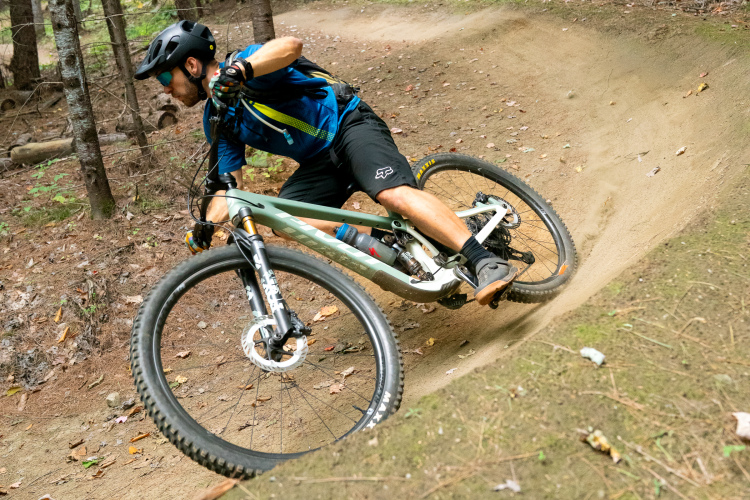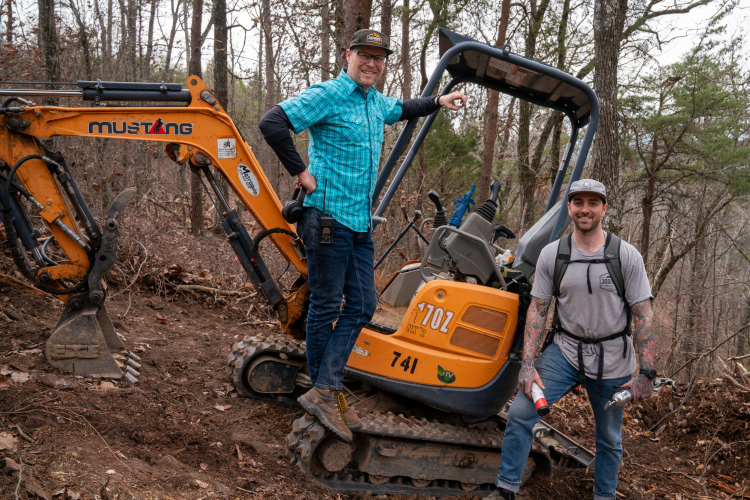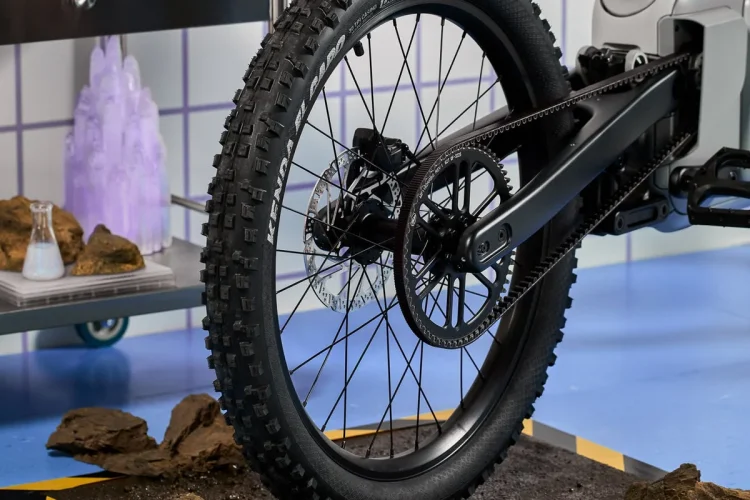This is a story that started a long time ago in a land far away–in Europe, actually. In 1927 Tullio Campagnolo lost a bicycle race in the Dolomite mountains because he couldn’t remove his wheel. He had flatted, but could not get the wheel off to repair the flat. At that time, wheels on racing bikes were secured with big wing nuts, which allowed relatively quick removal of the wheels without tools. That particular day the weather was cold and snowy, and Tullio couldn’t get the wing nuts off due to a combination of ice and hands too cold to work properly. He thought there had to be a better way…
Fast forward to 1930, and Tullio patented the quick release, and cyclists the world over rejoiced with their newfound way of easily and quickly removing wheels, even in the cold. The basic design is still in use today. Think about that for a second: the quick release axles on your bike were designed for road racing bikes in the 20’s. Thanks to the technology of modern mountain bikes (fat, grippy, tubeless tires, excellent suspension, stronger components) and modern trails, bikes are being pushed harder and faster over rougher terrain than Tulio probably ever imagined possible.

Enter the thru-axle. Similar to the axles found on motorcycles, thru-axles tie the fork or frame together in a much stronger, stiffer way. Most XC bikes use a 15mm axle up front, trail bikes use 20mm, and some DH bikes even use a 24mm axle. The larger the axle, the stiffer (and heavier) it is. In the rear there are a few competing sizes, but the 142×12 seems to be taking over for most mountain bikes.
Thru-axles were first seen on long travel freeride and DH bikes, but have now trickled down to pretty much every serious mountain bike. Even many entry level bikes now have thru-axle forks, and there are even a few thru-axle road forks now that disc brakes are starting to migrate to the pavement.
I’ve always wondered how much, if any, difference a thru-axle makes on a rigid fork. On a suspension fork a thru-axle helps tie both sides of the lowers together so they move the same amount, which makes a very big difference in cornering feel, but does a rigid fork flex enough side-to-side for a thru-axle to make a difference? I finally got a chance to find out when I received a Vassago VerHauen to review, and it came with a Whisky Parts Company No.7 fork. I contacted Whisky Parts to see about trying the No.9 fork as well. Thankfully, the timing all worked out, and everything arrived within a few days of each other. Perfect!
The Forks – Tech and Details
The forks are very similar, but they do have a few differences. Both feature full carbon construction, including the tapered steerer tubes, and both have post-mount brake mounts. They both have the same 100mm suspension-corrected axle to crown length (480mm) and the same offset (45mm), so the geometry is identical. The No.7 is the quick release fork and has a claimed weight of 640g, and mine weighed in at 577g, including the compression plug, with the steerer cut down to 7 inches. The No.7 fork retails for $405 and has a rider weight limit of 350lbs.

The No.9 fork has a 15mm Maxle Lite thru-axle and has a claimed weight of 680g. My fork was a good deal heavier than claimed: even after cutting the steerer down to 7.5in, the fork still weighed in at 735g, including the compression plug but no axle. The axle itself weighs 73g. The No.9 fork retails for $545 and includes the axle, and has a rider weight limit of 350lbs.

The No.9 fork features internal brake hose routing, going into the fork leg near the crown and exiting on the inside near the caliper. The legs and crown are shaped a bit differently on each fork, which results in a lot more tire and mud clearance on the No.9. Both forks appear to be extremely well-made, with excellent fit and finish.
The LBS did have a hard time installing the crown race on the No.9 fork; it seems the seat was just a tad large, so the mechanic lightly sanded it so the crown race would go on.

Before I continue, I’d like to make an open request to Whisky: please get a better naming scheme for your forks! Each unique fork should have its own unique name–the current naming convention is confusing. There are four No.9 forks: the thru-axle mountain bike fork in this review, a thru-axle disc brake cyclocross fork, and a thru-axle disc brake road fork, with two offsets available. Even worse, there are seven different No.7 forks! Whiskey Parts offers two mountain bike versions (which are totally different shapes), three ‘cross versions (tapered steerer/disc brake, straight steerer/canti brake, and a tapered steerer/canti brake), and one road version. There has to be a better way.
Now, back to the review…

The Test
I first logged a few rides with the QR No.7 fork, then switched to the thru-axle No.9. I rode them both with the same wheels and tires. As for comfort and vibration dampening, I couldn’t tell a difference between the two. They both rode very nicely, and a little smoother than my White Brothers Rock Solid carbon fork. As for cornering stiffness, where the thru-axle should help, there was a difference, but not much.

With suspension forks, after I spent some time on a thru-axle fork and then went back to a QR fork, I stopped several times on the first ride to make sure the skewer was tight! The QR fork had so much more side-to-side play that it felt like the wheel was folding over sideways when cornering hard. With the rigid Whisky forks, the difference was much subtler.

So, Which Is Better?
That’s a hard question to answer, and it really comes down to personal choice. The ride and feel of each fork is very, very similar. I would say the lateral stiffness is so close that other factors are more important in choosing between the two.

The No.9 fork is a little bit stiffer in the corners, but the bigger benefit is that it has more tire clearance. On the downside, the No.9 is $140 more expensive and good bit heavier. The VerHauen weighed 22.16lbs with the QR No.7 fork. After installing the No.9, and converting the hub axle to 15mm, the weight of the bike went up to 22.5lbs–a gain of 0.34lbs, which is about 155g.

The kind of bikes and wheels you have may influence your buying decision as well. Moving wheels back and forth between several different bikes is easier if they have the same axle type. How easily the front hub can change axle standards is another consideration. Some use end caps that can be switched without any tools, and don’t cost a whole lot. Other hubs require the use of tools to swap the entire axle out, and the axle itself can be fairly pricey.
Bottom Line
While I’ve laid out the different options and benefits available in each fork, ultimately the decision about which fork is best for your individual use is up to you!
Special thanks to Vassago and Whisky Parts Company for providing the parts to review.





















4 Comments
Oct 23, 2013
Oct 23, 2013
I guess I'm surprised there wasn't a big difference between the axles on the rigid fork. Like you said, on a suspension fork it's night and day.
Oct 23, 2013
Oct 23, 2013